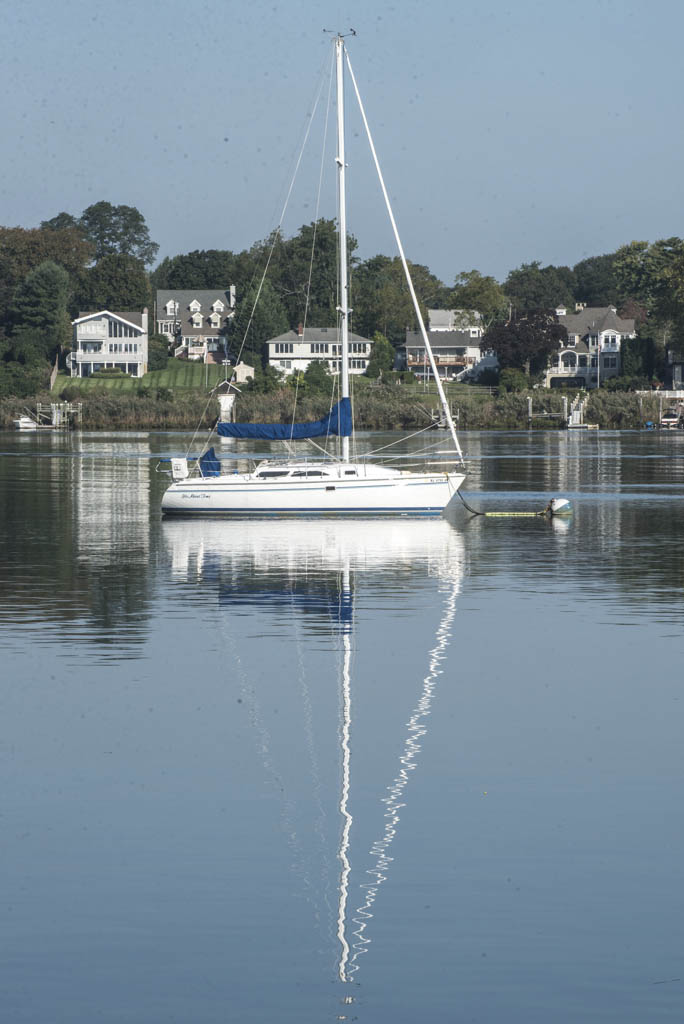The Navesink River is on its way to having pathogen-free waters.
Barhs Landing, located in Highlands, served as the host when members of The Navesink Maritime Heritage Association discussed a course of action for ridding the Navesink River of contaminants.
The Navesink Maritime Association is dedicated towards sustaining and discovering the Navesink River, according to the organization.
The Navesink River is an estuary that is approximately eight miles long that is surrounded by the communities of Middletown, Red Bank, Fair Haven and Rumson.
After high levels of fecal matter have been repeatedly reported in the waterway, the state enlisted Bill Heddendorf to investigate the matter.
Heddendorf is a member of the New Jersey Data Execution Prevention Bureau of Marine Water Monitoring.
According to a 2016 Clean Ocean Action report, The Navesink River water quality has been declining over the past 30 years.
Clean Ocean Action improves the degraded quality of marine waters, according to the organization.
“Numerous efforts, studies and thousands of water samples point to a complex source of fecal pollution from aging sanitary infrastructure, and agricultural and urban runoff; all of which is triggered, mobilized and exacerbated by rainfall,” according to the report.
After conducting various dye tests in sewers, Heddendorf said he was able to effectively locate and address areas of Fair Haven, where there were blockages in sewer systems.
The blockages offset the way septic flows through the sewers, Heddendorf said.
Heddendorf said he put green dye in those sewers where he was informed there were contamination issues. He said, he then tracked the green water to note where it emptied.
Heddendorf conducted a dye study at Harrison Avenue and Marion Street in Fair Haven. He said his team found two issues in the sanitary lines where human waste was entering the storm drain system.
Heddendorf said when there are blockages in sewers, the water that contains septic waste will deter off of its intended course and end up in the Navesink River.
Although select blockages in the specific sewer systems were remedied, high levels of fecal matter are still entering the river, Heddendorf said.
“We selected sample locations and tried to look at those hot spot areas,” Heddendorf said.
Heddendorf said he is currently researching the source of the E Coli. that is entering the river by alternate means. He said he intends to determine whether the fecal matter is from humans or animals.
“We ended up talking to the Monmouth County Health Department and they found a bunch of stall mucking and manure on the edge of Marion Lake. Somebody had just bought a small farm, didn’t really know what they were doing and they were just throwing the muckings and the manure right on the edge of the lake. As soon as it rained, it all washed into Marion Lake and right into the river,” Heddendorf said.
Heddendorf said the area was cleaned in less than one month. He said the water quality in the Navesink River had “dramatically improved”.
Heddendorf said his team has implemented “fecal sniffing” dogs on his detection team. The dogs are trained to detect feces in underground waterways.
“Clean Ocean Action, they hired environmental canine services. They brought in two dogs. I didn’t believe them when they said they had human-poop-sniffing dogs, but they did. The dogs were trained to tell what the detection limit was for human feces. Whether it really is human feces, nobody really knows. Every time the dogs would make a positive hit in an area, we would collect a sample and run it,” Heddendorf said
Heddendorf said he collected samples with the dogs and analyzed them with an antibiotic resistance analysis.
The detection is not 100% effective because the dogs can pick up the scent of feces from a spill that occurred up to two years in the past, Heddendorf said.
Heddendorf said he brought the dogs to Middletown, Fair Haven and Red Bank.
Although strides have been made, cleaning up the Navesink River will be an ongoing endeavor, Heddendorf said.
Controlling the means by which fecal matter enters the Navesink River requires additional research and studies.

